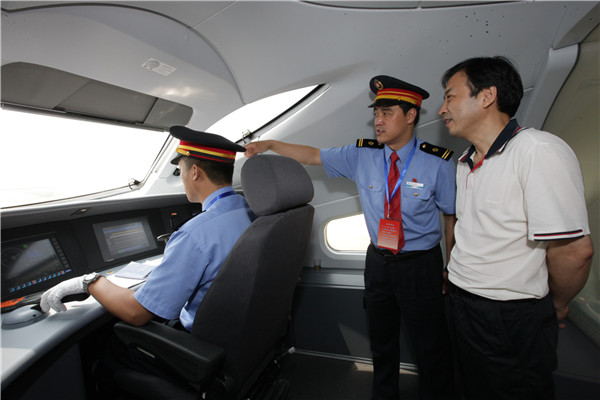How the railways moved fast-forward
 |
|
Wang Xiong (right) interviewed engineers, officials, drivers and attendants on high-speed railways for his book China Speed. [Photo provided to China Daily] |
His book targets sensitive topics like ticket prices, investment, intellectual property and diplomacy. He has even followed online forums to find out what the public most wants to know.
"The only way is to face questions and explain them truthfully," the author says in his office at the People's Railway Daily, near Beijing West Railway Station, where he serves as the president of the newspaper.
The book offers 2,600 statistics about HSR, supplemented with 50 photos, some rarely seen.
"There are no standard answers in my book. Different interviewees give varied ideas, which added to the difficulty of writing," Wang Xiong says.
He believes China is a global leader "in HSR bridges, tunnels and roadbeds, as well as track structure and EMU technology".
He says the record speed for an operational train is 486.1 kilometers per hour. It was recorded in a test for the Beijing-Shanghai HSR in December 2010.
"HSR is the scientific innovation that can directly bring tangible benefits to people," says Wang Xiong.
David Ferguson, an international media expert, says: "China's HSR very much merits a book, and this one does justice to the topic. The author uses his encyclopedic knowledge to provide concrete characters and fascinating stories.
"The English version is a valuable resource to people outside China who want to know how China progressed from a learner to a teacher of HSR."
Wang Xiong was born in 1957 in Hubei province. He was a driver of steam trains in the late 1970s before attending Suzhou Railway Institute (now known as Suzhou University of Science and Technology) for his degrees, majoring Chinese language and literature.

















